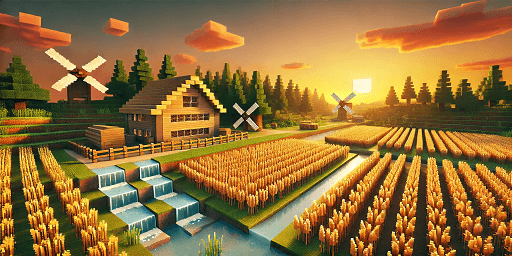Having enough food is one of the basic necessities to survive in Minecraft. Additionally, you need wheat primarily for breeding animals. So, in the end, you can probably never have enough. However, manually harvesting everything is not a pleasant task. In the last post about Redstone, we already discussed the basic functions of an automatic farm, but today we’re putting it into practice! With this guide, you’ll build your own automatic wheat farm based on water and Redstone.
Minecraft Wheat Farm: Essential Resources for Building an Automatic Farm
Initially, you’ll need a few important resources to have on hand. How much you need is up to you, as the fields can be built infinitely large. But for a small farm, you don’t actually need much. We also focus on resources that are easy to obtain and don’t take much time.
Have ready:
- several stacks of building materials for outer walls (we chose wood)
- several stacks of dirt
- one or more hoes for tilling
- water buckets
- plenty of wheat seeds
- 2x chests
- 1x hopper (crafted from iron and a chest)
- Redstone dust
- approximately 10x Redstone repeaters (depending on variation)
Minecraft Wheat Farm Construction Guide: Step-by-Step to Automatic Harvesting
Minecraft Wheat Farm: Building a Collection Basin for Automatic Harvesting
The first step is to dig the trench for the wheat bundles and seeds that will be washed away later. We’ve already learned that water flows 8 blocks from the source. So, dig 8 blocks into the ground. Behind that, dig two more blocks for the chests. Place the chests and attach the hopper to the side of the chest using Shift+Right-click. Then, you can add water at the other end and let it flow over the hopper.
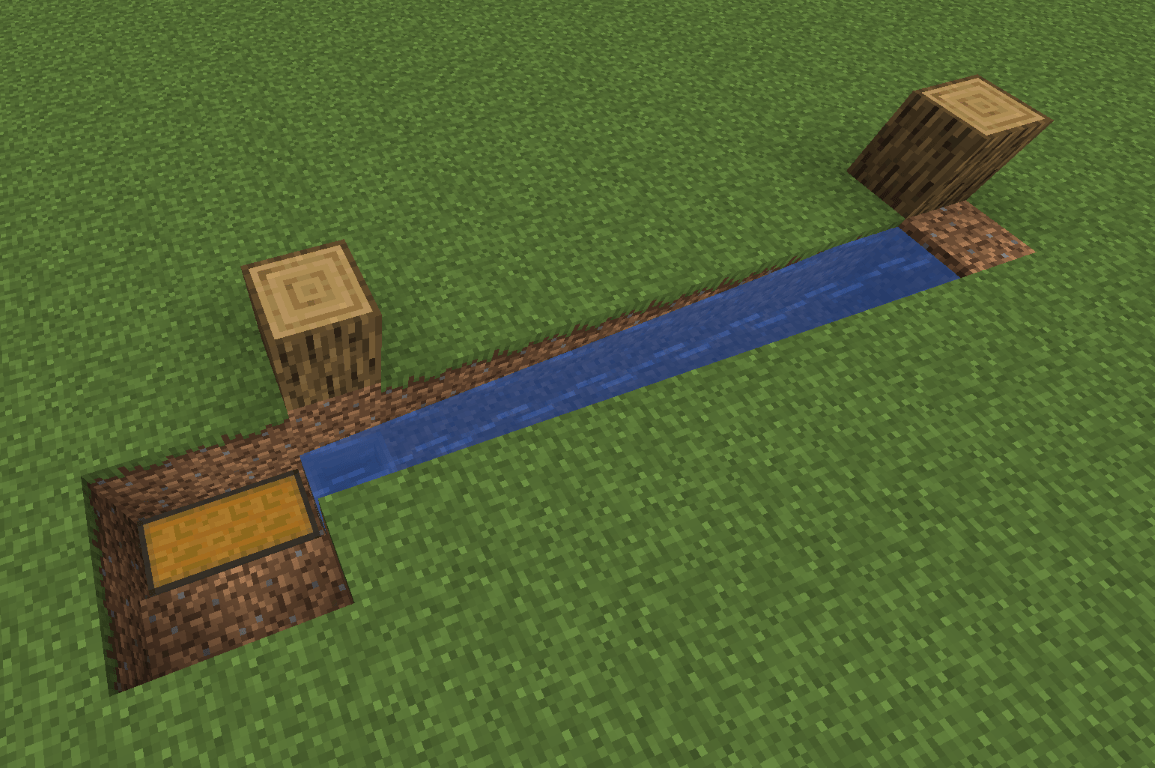
Building Minecraft Wheat Fields: Efficient Design for Large Harvests
At this point, the size is actually up to you. Automatic farms of this kind work on the principle of water, so they look similar to rice fields in Asian countries. The levels provide plenty of space for planting and can be extended infinitely.
The lowest level should be 8 blocks deep (again, the reach of water). All levels above should be one block higher and only 7 blocks deep. This way, you only need one water source at the top for harvesting. This creates a kind of staircase. The width is irrelevant, but based on the trench below, 7 blocks are ideal here as well.
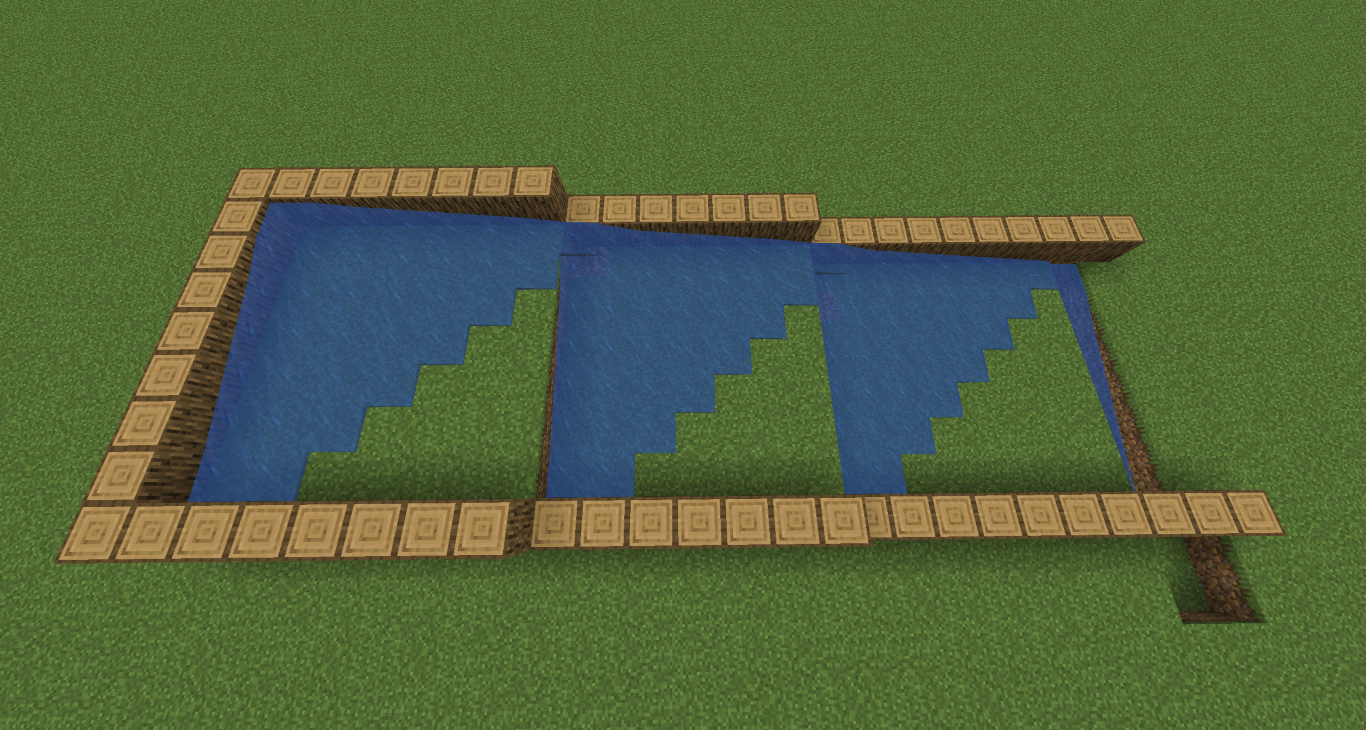
Minecraft Wheat Farm: Water Sources and Planting for Optimal Harvest
A good field naturally needs a water source. Some tutorials use a parallel trench from top to bottom, but we won’t do that. We place the source directly into the field. Although we lose three blocks, you’ll have more than enough wheat in the end. This method is much simpler.
We’ve already learned that water sources hydrate fields 4 blocks away. And since our fields are only 7x7 or 7x8 blocks, it fits perfectly! Place the water source symmetrically in the middle of the field.
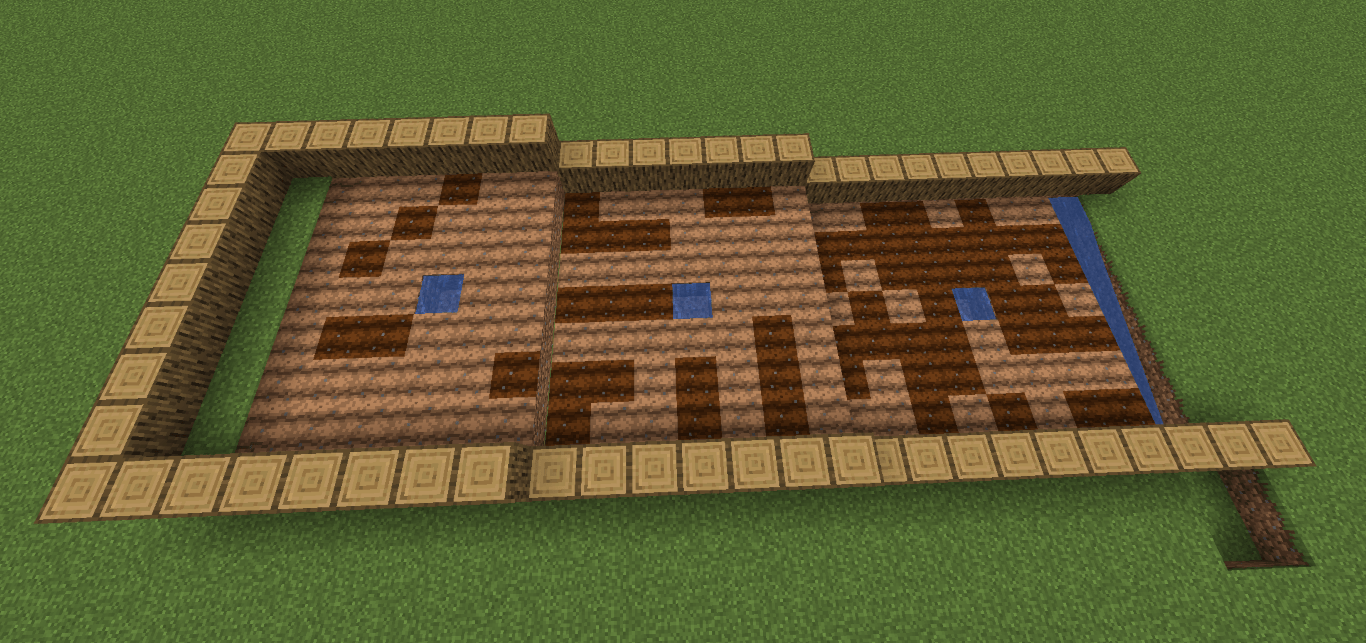
You should later cover these water sources with a slab or trapdoor. Nowadays, these blocks can be filled with water, which is very convenient. Even if you can’t see the water anymore, it’s still there.
Now prepare the field but leave a strip at the top for the future harvesting mechanism. Otherwise, all fields should be sufficiently watered. Then plant your wheat with the seeds and let everything grow at leisure.
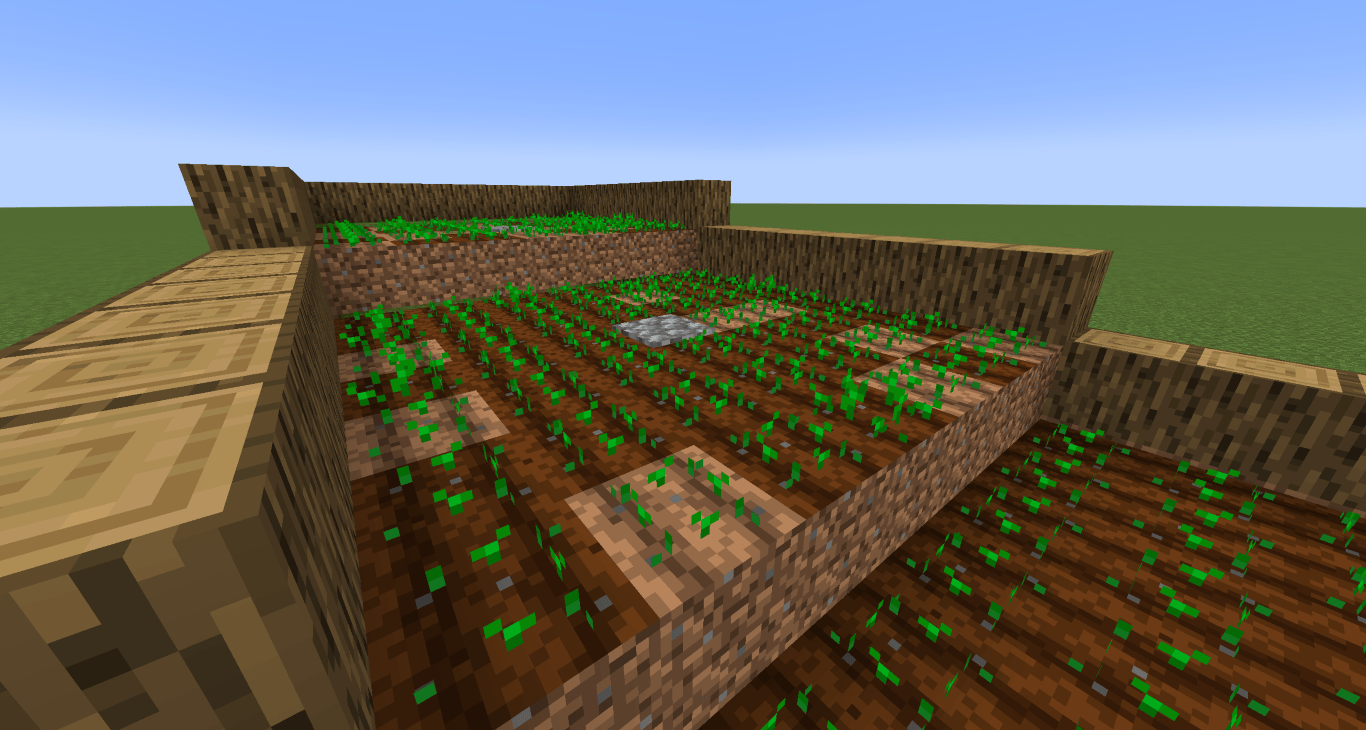
Minecraft Wheat Farm with Redstone: Easy Automation
Now comes the probably tricky part, but don’t worry, it’s not that complicated! First, we attach our trapdoors at the top of the row we left free. Attach them from above to the grass block below. Test if they fold upwards towards the field. In the end, however, you should fold them all down to connect the Redstone.
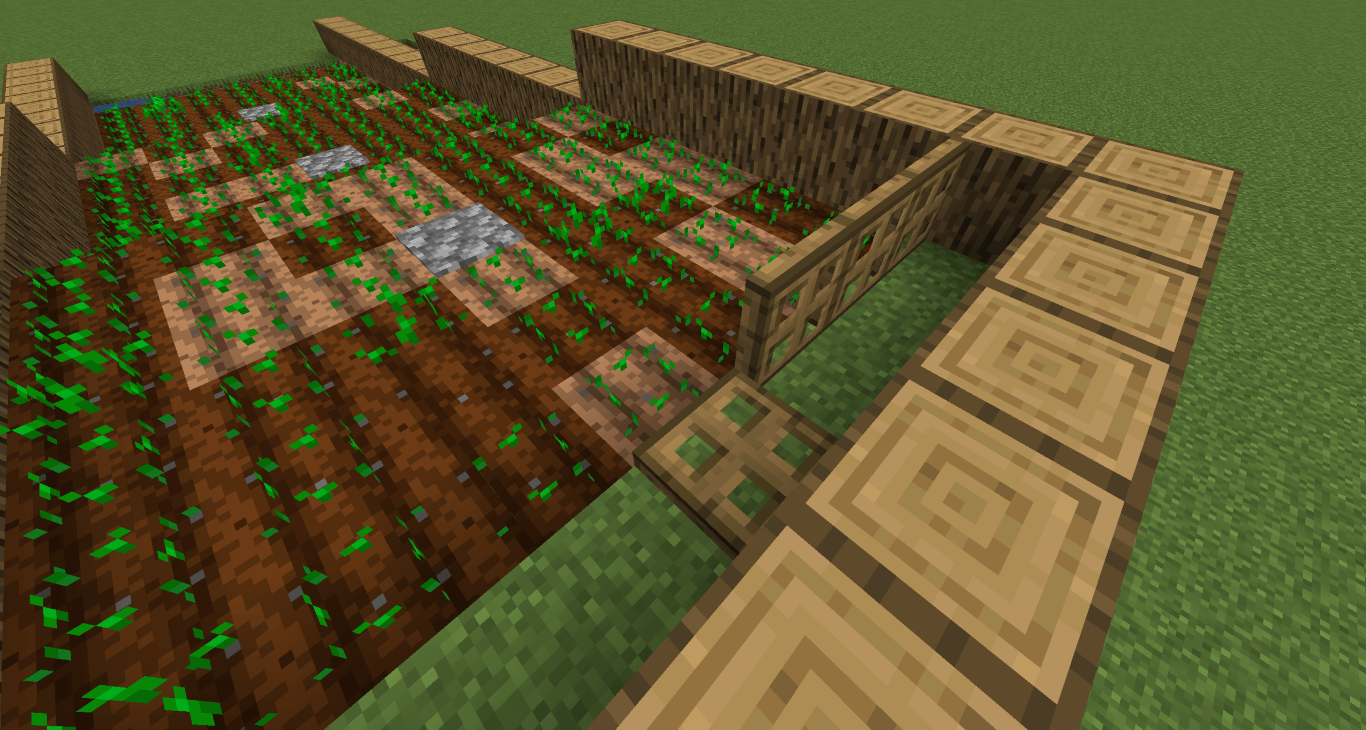
Trapdoors hold back the water, but don’t pour it into the canal yet. Wait until everything is ready. You can now simply lay the Redstone on the edge behind it and attach a lever at the end. This should cause the trapdoors to fold down. The block below transmits the Redstone signal to the trapdoors. However, it looks a bit unsightly.
We therefore move our Redstone behind and take a look at another peculiarity. Redstone cannot run parallel. This is a bit inconvenient for us, but nothing serious. Help with repeaters running into the block behind the trapdoors. Then everything should work smoothly!
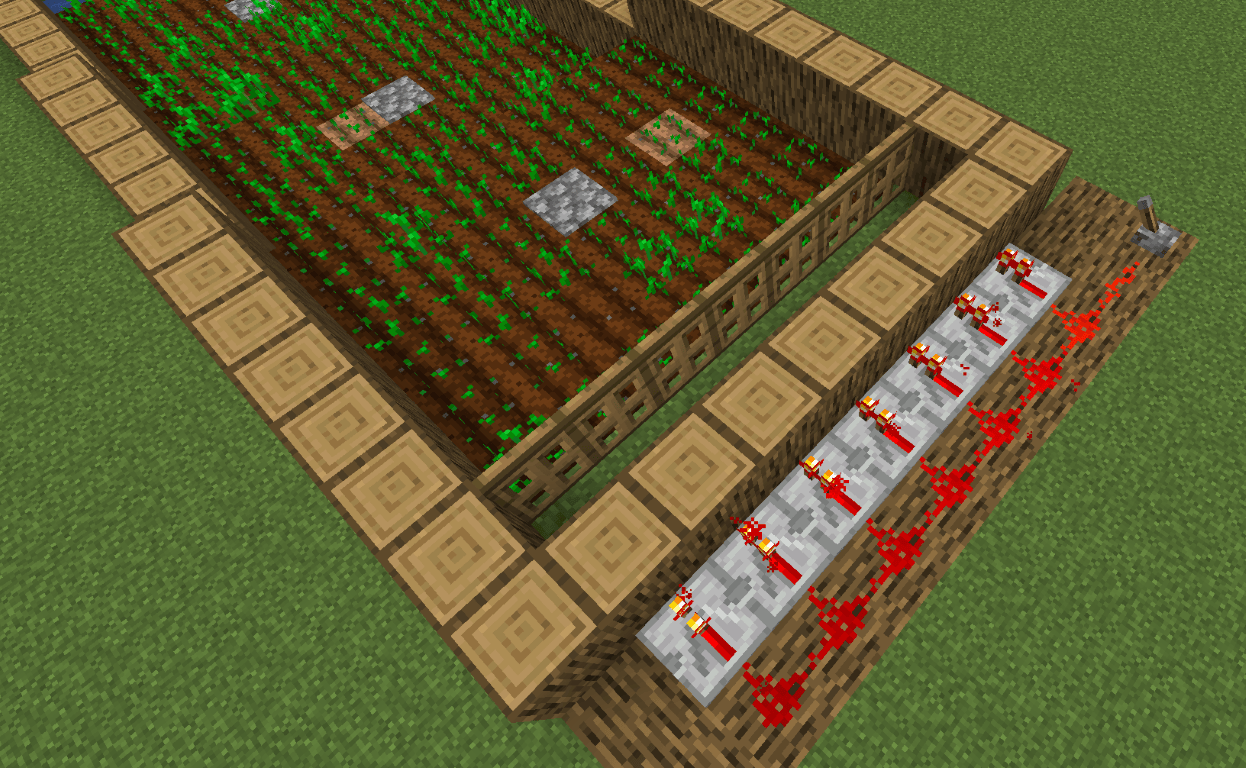
You can then lay the Redstone to the front to the chest to have everything in one place. Use repeaters to ensure the signal is transmitted. Build a kind of cable duct along the fields. In the end, you should set a lever and turn on the line. The trapdoors unfold.
Minecraft Wheat Farm Harvesting: Automatic Wheat Harvesting with Water and Redstone
If you’re sure your Redstone works, you can fill the trapdoors above with water. Click on the grass and NOT on the trapdoor itself, as it will fold.
Now it’s probably time to wait, as your wheat needs to grow. This can take several days, but you can speed it up with bone meal. For such a large field, it’s not really worth it, though. Do something else and harvest the field when all the wheat plants are nice and golden yellow. Flip the lever and watch the water rush down! The wheat and seeds should either land in the chest or above it if they’re too fast.
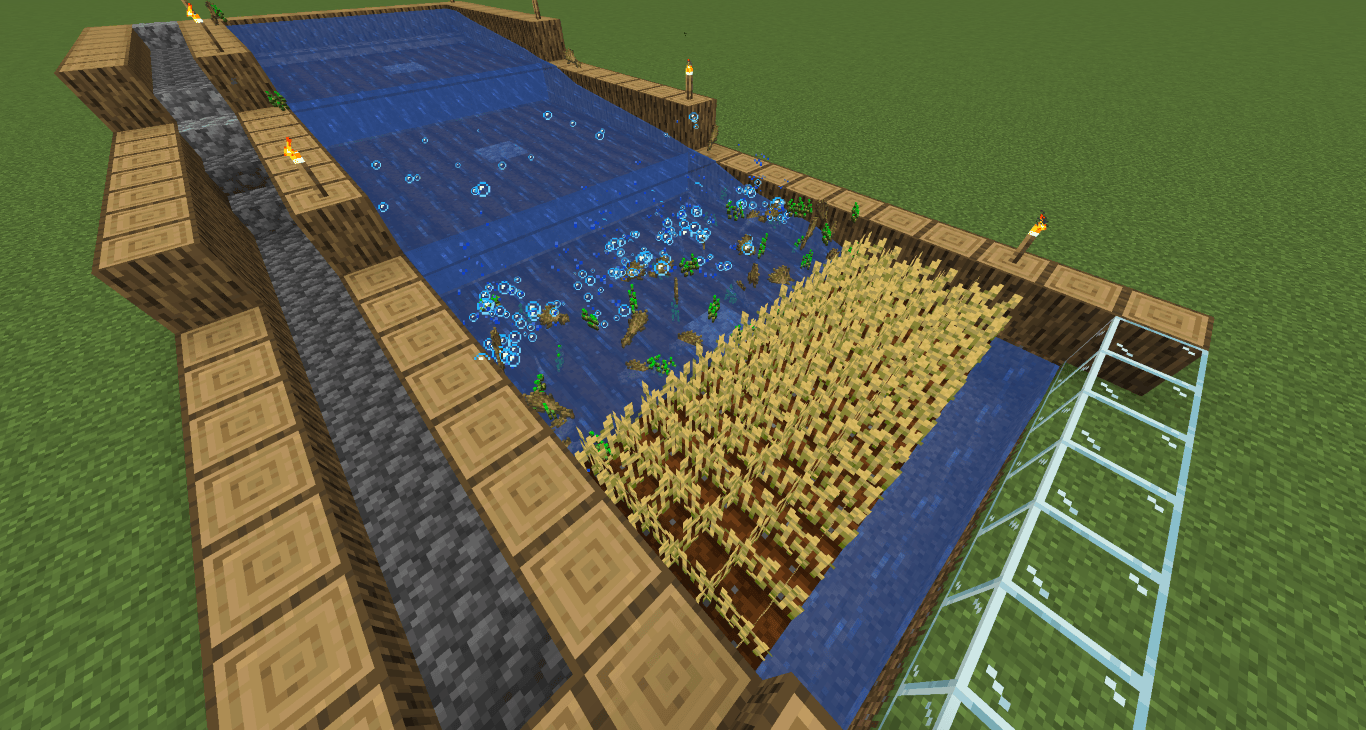
Now you have several stacks of wheat and certainly even more seeds. Unfortunately, you have to replant them manually, as there is no automated way to do so (besides using villagers). Repeat the process later or expand the field with other crops like potatoes or carrots.
Conclusion: Why an Automatic Wheat Farm in Minecraft Will Transform Your Game
An automatic wheat field on your farm is actually part of the basic equipment! Eventually, you’ll have more than enough wheat for bread and your animals. And the fields also look nice and can be lined up. Automate not only your farm but your entire gaming experience on your own server. Rent a Minecraft server and take your farm projects to a new level! Play either alone or with friends to build massive farms.
More interesting articles
Minecraft Guide: Automatic Potato and Carrot Farm for Unlimited Food and Smart Trading Options
Building a Minecraft Farm: Simple Guide for Food and Resources
Build an Automatic Pumpkin and Melon Farm in Minecraft: Make Harvesting a Breeze

